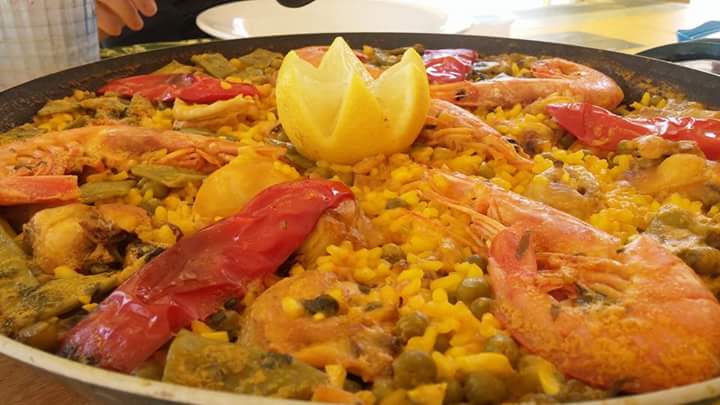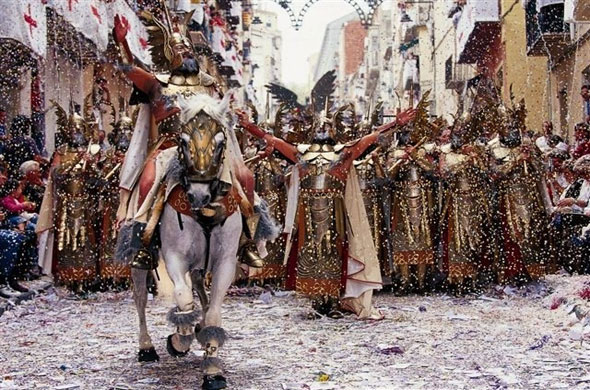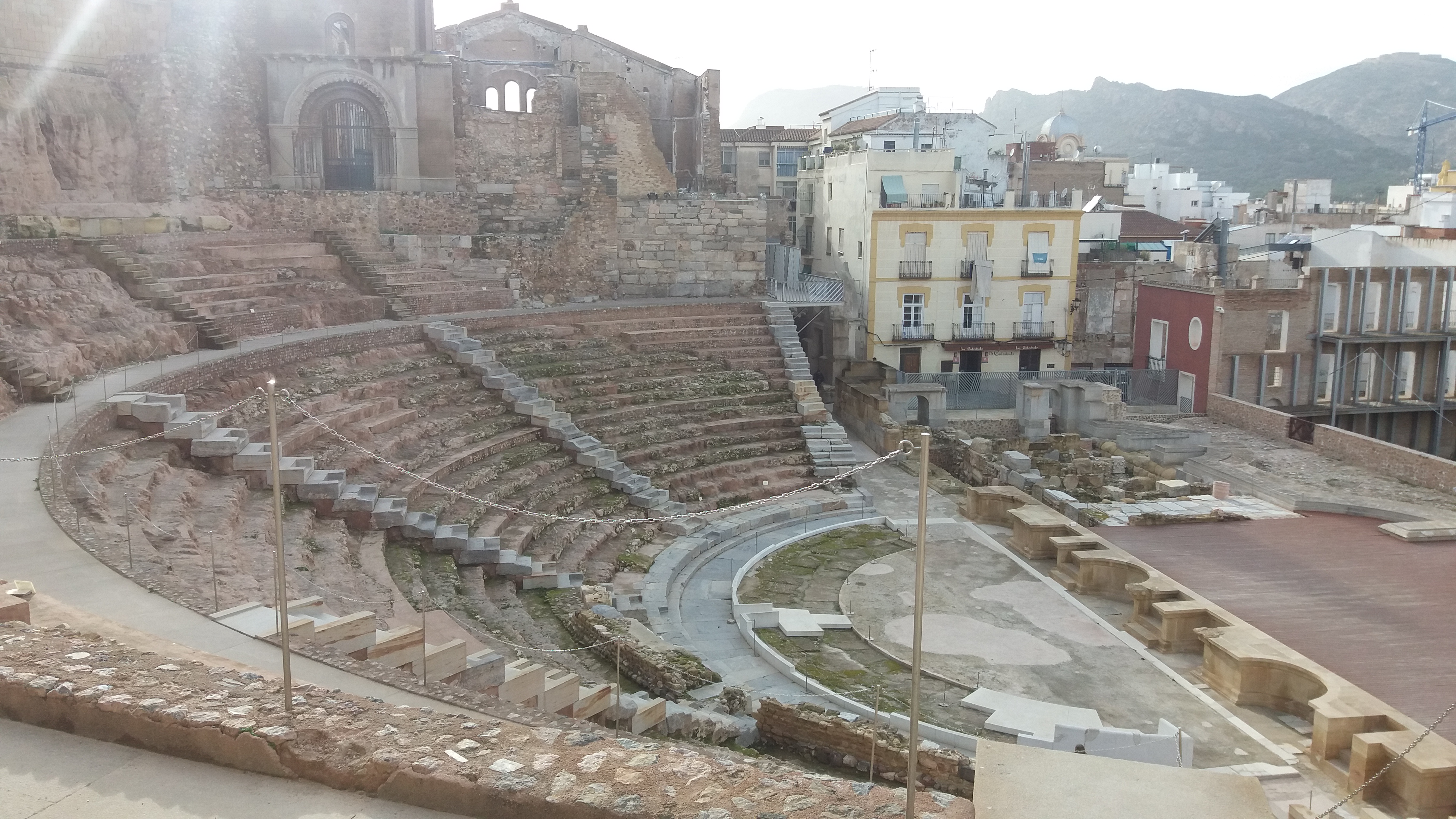I’m living and working in Alicante, which is part of the Valencia province and where valenciano is spoken daily, however here in Alicante most people tend to speak Spanish, except for the older generation who still hold on to tradition. Even though Spanish is the lingua franca here, you need to be fluent in valenciano if you ever choose to work in any type of job employed by the state, such as doctors, the police force or in the local council. It is also taught in schools and it was the subject I used to hate the most whilst growing up, although now I really appreciate the extra language! It’s debated that catalan (which is basically the same as valenciano) is derived from the Occitan language and it was actually considered an Occitan dialect until the 19th century. However it’s not just the Valencian language which has left an impression on this coastal province, it’s also the traditional food which has been passed down through generations of local people. The most prevalent dish that comes to mind is paella, a dish which most people stereotypically associate with Spanish culture and for good reason; it’s absolutely delicious when cooked properly. It´s a dish that originated because it was cheap to cook, as it uses very simple and readily available ingredients, which are paella rice, chicken, beans, salt, tomatoes, saffron and water. It is typically eaten by families for Sunday lunch and the Spanish like to joke that they can always spot a tourist a mile (or kilometre) away because they always order it during the night for dinner, which is the equivalent of having a Sunday roast on a Tuesday night instead – it just sounds weird!

One of the aspects of Spanish life which I find the most entertaining is the fact that they have a fiesta for everything – I love it! You might think it’s an ordinary Friday and the next thing you know there are fireworks being set off and the streets are being closed because of a parade coming through to celebrate a Saint or a battle that was won. One of the biggest parades throughout the Valencian community is ‘Moros and Cristianos’, where they celebrate and commemorate the battles between the Moors and Christians during the ‘Reconquista’. This festivity consists of thousands of people from the local community, re-enacting the battle, whilst wearing elaborately, embellished costumes which all take a year to organize. Alcoy in the Alicante province is the biggest in Spain and is deemed as one of the noisiest fiestas, with ‘troops’ marching in to battle, re-enacting it and later setting off cannons to signify an end of the combat and victory to the Christians. The most impressive part of this festival is probably the attention to detail, especially the costumes which are each worth a small fortune, consisting of luxurious fur, embellished embroidery and swords which look alarmingly real (some of them probably are!)

One thing you will definitely notice when living here is how loud everything and everyone is! There’s a fiesta going on? Expect fireworks until about 3 in the morning. You’re at a restaurant? Expect everyone to be talking over and to everyone. Taking the bus somewhere? Expect people to be talking to the person to their left, right and two rows down. In the bank? Expect to be asked who’s last if you’re waiting in a queue. If you are into a quieter and peaceful lifestyle, then maybe Spain might not be the place for you, as it is the second noisiest country, beaten only by Japan. If you are also a very efficient person who appreciates punctuality, then maybe you won’t be too amused with the Spanish way of life which prioritises ‘mañana’ over everything. If something isn’t urgent then it can be done tomorrow, this doesn’t mean the Spanish are lazy however, quite the contrary, they have a great work ethic which goes hand in hand with their investiture in their family’s well-being.
At the end of February, the only thing people in Alicante can talk about is ‘Carnaval,’ a fiesta which was banned for 40 years under Franco’s rule. It was traditionally used as a symbol to signify a kind of farewell to abundant living, before the strict abstinence that goes hand in hand with Lent is implemented. However nowadays it is valued more as just a way for people to let off steam for a night, have fun and use their imagination to create inventive and wacky group costumes, such as Mario and Luigi, the house from ‘Up’, Scrabble letters and superheroes. Funnily, it isn’t just the children who dress up, in fact at work, the older students and teachers seem to be more preoccupied with their costumes than the younger pupils! This year a friend and I decided to team up and brainstorm ideas together, the result was me dressing as a ladybird and she went dressed as a bug catcher, complete with a net and binoculars.
If partying isn’t your thing, then there are plenty of interesting cities worth visiting. One of them is Cartagena and can be found in the Region of Murcia. It’s an old Roman town, which also happened to be the last city to fall to General Francisco Franco, along with Alicante, during the Spanish Civil War. There are plenty of archaeological sites to see, such as the Roman Theatre of Carthago Nova, the house of Fortune and Augusteum. It is definitely well worth a visit and there are plenty of really lovely cafes to visit whilst you are sightseeing, one of my favourites is ‘Valor Cafetería’, where I always order ‘churros and chocolate’ and they are probably one of my favourite treats to have when I go out and I’m definitely going to miss them when I go back to university! Whether you are interested in partying, history or simply just eating out in restaurants, this part of Spain has something for everyone.

¡Buen viaje!
Follow me on Instagram: @em_djones
